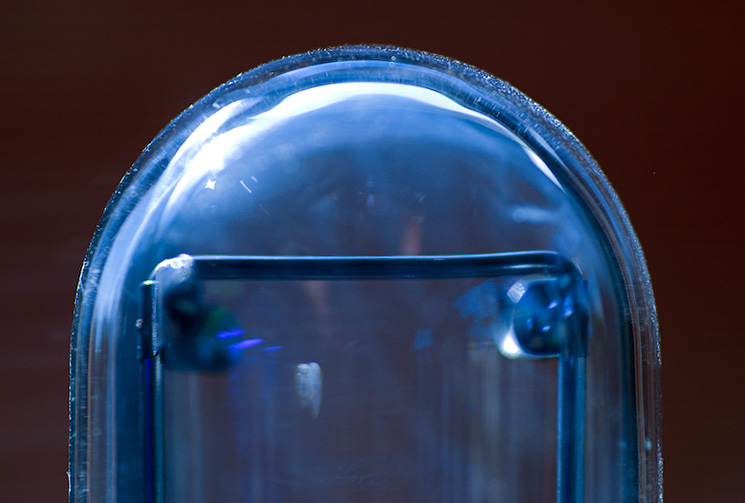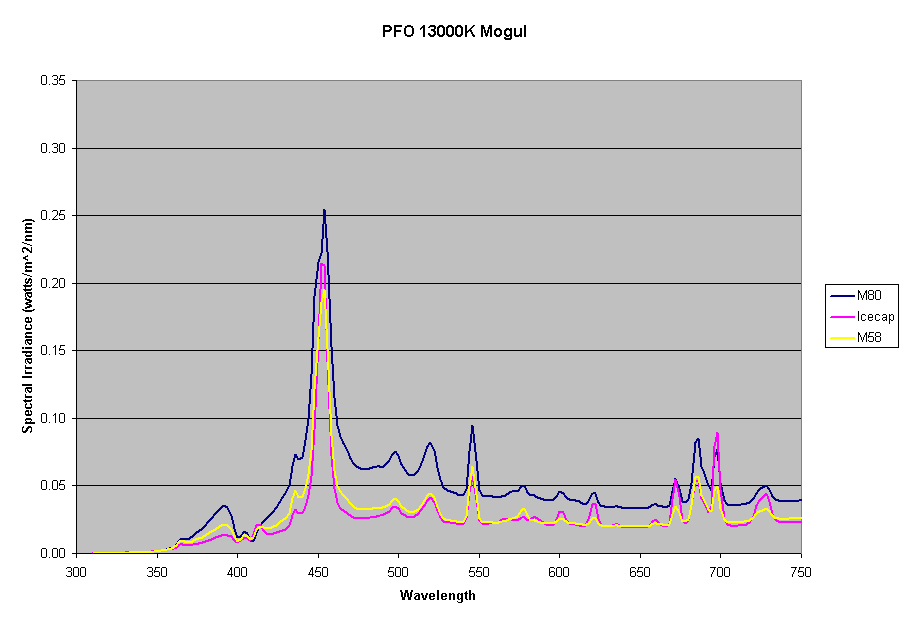Personal preference, yes, like me and many others here.
It is, without a doubt. And people should respect your choice.
Follow along with the video below to see how to install our site as a web app on your home screen.
Note: This feature may not be available in some browsers.
Personal preference, yes, like me and many others here.
Sorry for speaking the truth. That's exactly how most people see it!Hmmm….your list of halide attributes are all animal-centric to animals being kept, whereas your led characteristics are purely aesthetic.
Couldn't be farther from the truth...mh's never been a threat.One thing I would like to add to this thread is the fact that many LED users see metal halide almost as a threat. They think metal halide should be out of the market and the only option is what the LED the chose.


| HQI (M80) | 373 | 122 | 3.23 | 189.6 | 6266 |
| HQI (M80) | 331 | 122.2 | 2.91 | 99.3 | na |
| HQI (M80) | 333 | 121.8 | 2.94 | 85.3 | na |
The reason why Iwasaki grew corals faster than other bulbs and produced those amazing pigments is because it was the "PAR monster", as many called it.Couldn't be farther from the truth...mh's never been a threat.
I belive some think LEDs are a threat though..
Just tired of hearing how natural and "superior" MH's are..
and how "toy like" they are....
Their demise will have NOTHING to do with any attitudes or opinions here.
There is no need for a "crusade".
The 2 will coexist for as long as manufacturers produce COMMERCIAL MH's.
Trying to drum up "new business" to protect ones own is disingenuous.
Or in the case of Tuillo..sales.
Lets get real your belief is if more go to mh there will be more for you.
and that is fine.. in a sense...or at least err "human nature".
If it was altruistic you would help both mh and led users succeed.
As to 6500k's I often stated the opinion of others that it was a de-facto excellent light.
But here is the point, even when led's weren't "born" yet it appears few used said bulb.
I assume it was a matter of personal look (overall i.e too yellow) and pigment expression(no blue "pop", technically just masked but I digress).
the reason why "blue" metal halides proliferated.
Nobody then designed an LED to match a 6500k light source.
Right or wrong that is how markets work..
Now why was the 6500k successful.
First all as an over driven light source is was like 33% more convertable wattage than a "normal" halide.
This translated in to tons more photons.
Next even though visually it was 6500k it had more blue photons than even a 20000k radium.
Point is pointing to a 6500k and saying "see what halides can do" and attributing an entire class based on ONE very specific bulb or really a "system"
. Well ridiculous.
Look at the PPFD figures here. Iwasakis are 2x the par output of other lamps in the same "class".
top Iwasaki, middle Hamilton 14000K, next Radium 20000k
250W Mogul base bulbs

Product Review: Spectral Analysis Of 250w Mogul Base Metal Halide Lamps - Part I
This is a 2-part series covering a number of new lamps that have recently hit the market.reefs.com
Ballast.................................................watts................input voltage......amps.....................ppfd........................K temp...........
Product Review: Spectral Analysis of 250W Mogul base Metal Halide Lamps – PART II
This article presents the data on the remaining nine 250W mogul base lamps along with the comparison of all the 250W mogul lamps.reefs.com
HQI (M80) 373 122 3.23 189.6 6266
HQI (M80) 331 122.2 2.91 99.3 na
HQI (M80) 333 121.8 2.94 85.3 na
GEE, I wonder why they grew corals faster than other mh's.. /s
I think Tullio's only goal in that video was to show the facts of each technology. It's good for the hobby to know the differences and having people to be able to choose what they want. Any rumor we had about LEDs to be the same or even better than halides needs to stop, I guess. They are just different options.You can grow corals under MH, T5, LED, or any combination of those lights. It's really personal preference.
What spectrum a particular fixture provides depends on how it is designed. Different LEDs produce light of different wavelengths. Tulio showed an LED fixture that provides light in the UV-B wavelength range. They make LED lights that produce this wavelength for reptiles already. So someone could make an LED light that has those wavelengths that MH has that most or all commercial LED fixtures lack. It's not that LED can't, it's that they don't.
The next question is, is it necessary? Putting LEDs in at those wavelengths means you aren't putting in LEDs at other wavelengths. So if a manufacturer is going to do it, or if someone is going to buy it, theoretically there should be a reason to do so. That's hopefully how R&D is supposed to work. I personally want the R&D done before I buy a product, not after.
If you want the wavelength of a MH, buy a MH. If you want the functionality of an LED, buy an LED. If you like the look of T5, buy T5. Not sure what all the hubbub is about.
I think Tullio's only goal in that video was to show the facts of each technology. It's good for the hobby to know the differences and having people to be able to choose what they want. Any rumor we had about LEDs to be the same or even better than halides needs to stop, I guess. They are just different options.
I have a feeling there should be more to come from Tullio after this.
I am not sure if there is anyone better than Tullio to show what he did, the way he did. We need to understand that he sells halides, but he also sells LEDs. He promotes both. The facts he exposes about halides wouldn't be more if he didn't sell them. For the past decade I've heard so many people saying they were going to do this and that to compare and prove LEDs X halides... those guys never came back with their results.Do you think that maybe the video would have been more receptive had say someone in attendance that actually ran studies of coral growth, par, pur, UV, among other things in oceanic settings? The whole science thing vs the appearance of sales and infomercial?
Not knocking it nor is this a better than statement but rather bringing in someone who actually has field work and experience on the subject.

I think Tullio's only goal in that video was to show the facts of each technology. It's good for the hobby to know the differences and having people to be able to choose what they want. Any rumor we had about LEDs to be the same or even better than halides needs to stop, I guess. They are just different options.
I have a feeling there should be more to come from Tullio after this.
Interesting thread. I still maintain that corals can be grown successfully under all kinds of lighting: MH, LED, T5, T8, PC, and everything outside or in between. In the end, it all comes down to personal preference. I support keeping all options open for anyone who wants to use them.
I will say as others have noted in here that far more threads are started to try to argue against LEDs by the MH crowd than vice versa. Most LED users don't see a need to argue against MH, so I'm not sure where the idea that LED users/makers see MH as a threat comes from.
I do believe that preference among hobbyists will almost always come down to convenience, and that is likely why the shift in the hobby has gone largely in favor of LEDs. Controllability and low maintenance are HIGH in priority for most hobbyists.
Tuillo has the knowledge and capability to filter out uv and IR in a halide.decade I've heard so many people saying they were going to do this and that to compare and prove LEDs X halides... those guys never came back with their results.
Metal Halide is a superior ligh for a reef. Sadly the technology is dying.
Now we stick with expensive led, that you need to replace every 3.5-4y completely.
Well said. I have read all the articles and have run halides longer than most here, 30+ years.You can grow corals under MH, T5, LED, or any combination of those lights. It's really personal preference.
What spectrum a particular fixture provides depends on how it is designed. Different LEDs produce light of different wavelengths. Tulio showed an LED fixture that provides light in the UV-B wavelength range. They make LED lights that produce this wavelength for reptiles already. So someone could make an LED light that has those wavelengths that MH has that most or all commercial LED fixtures lack. It's not that LED can't, it's that they don't.
The next question is, is it necessary? Putting LEDs in at those wavelengths means you aren't putting in LEDs at other wavelengths. So if a manufacturer is going to do it, or if someone is going to buy it, theoretically there should be a reason to do so. That's hopefully how R&D is supposed to work. I personally want the R&D done before I buy a product, not after.
If you want the wavelength of a MH, buy a MH. If you want the functionality of an LED, buy an LED. If you like the look of T5, buy T5. Not sure what all the hubbub is about.
